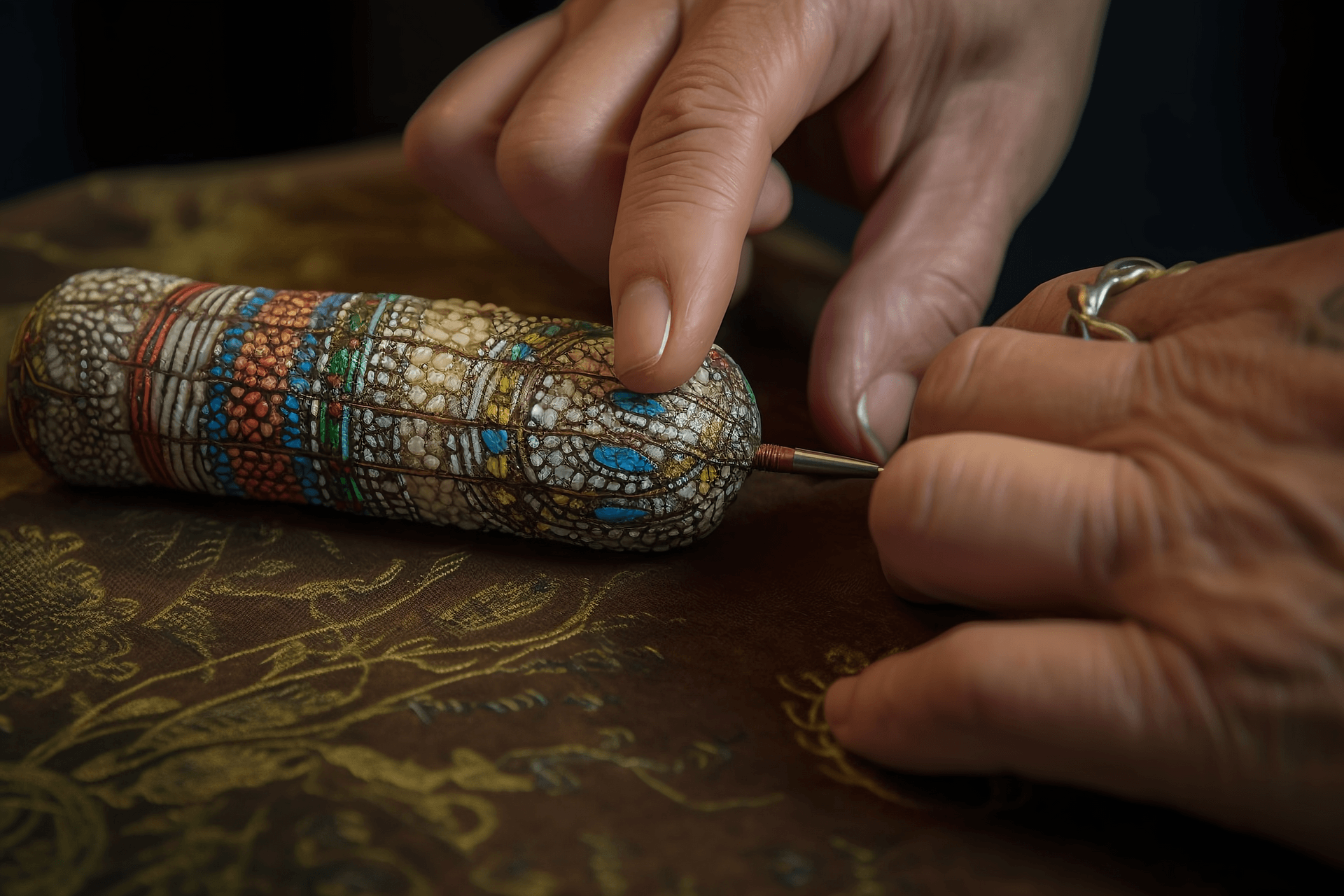The Ming Dynasty Li Shizhen's "Compendium of Materia Medica" states: "When using mugwort leaves, they must be aged, making them soft and fine. This is called mature mugwort. If using fresh mugwort, the moxibustion can easily harm the muscles and veins." The book also records the process of making mugwort wool: "Select clean leaves, remove dust, put them into a stone mortar, pound them with a wooden pestle until they are well mashed, filter out the residue with a sieve, and pound again with the white ones until they are as soft and fine as cotton. When used, they should be baked and dried to enhance the effectiveness of moxibustion." The "Tai Ping Hui Min He Ji Ju Fang, Volume Eight" also mentions the method of making mature mugwort: "Select aged yellow mugwort, regardless of quantity, pick the leaves and put them into the mortar, lightly pound with a wooden pestle until they are mature, use a fine sieve to remove the green residue, and repeat the pounding and sieving process three times. Separate with a horsehair sieve, pound and sieve again, until it becomes soft, fine, and yellowish."
Good mugwort wool is easy to burn, has even fire power, fragrant aroma, and little smoke. The quality of mugwort wool is generally related to the following four conditions: (1) The season of collecting mugwort leaves, with late spring and early summer being the most ideal. During this season, the mugwort leaves are lush and tender, with fewer fibers. (2) Delicate processing, removing dirt and fibers. (3) Good storage conditions, keeping the mugwort wool dry. (4) Long storage time, allowing the mugwort wool to age and further break down its fiber structure.
Mugwort Wool Grades
The quality of mugwort wool has a certain impact on the effectiveness of moxibustion. It is classified into several grades based on the degree of processing (pounding and sieving). Good quality mugwort wool is pure, free from impurities, dry, and has been stored for a long time, which makes it more effective and beneficial. On the contrary, poor quality mugwort wool is stiff and difficult to gather, and when burned, it produces intense fire power that can cause patients to feel burning pain, which is hard to tolerate. Additionally, due to the presence of more impurities, there is a risk of bursting during combustion, and the scattered ash can easily burn the skin, requiring caution.
In clinical practice, the selection of mugwort wool depends on the needs of the patient's condition. Generally, for direct moxibustion, fine mugwort wool is used, while for indirect moxibustion, coarse mugwort wool is used. The best quality is achieved with aged and long-lasting mugwort wool.
Mugwort Wool Storage
Newly produced mugwort wool contains more volatile oils, resulting in excessive fire power during moxibustion, which can harm the muscles and veins, as mentioned in the "Compendium of Materia Medica." On the other hand, aged mugwort wool has further break down of its fiber structure. Therefore, aged mugwort wool is considered superior and it is believed in the "Mencius" that "if you have a seven-year illness, seek a three-year-old mugwort."
Since aged mugwort wool is preferred, it needs to be stored for a period of time after being made. Due to its water-absorbing nature, it is prone to moisture, mold, and insect damage if not stored properly, which can affect its combustion. Therefore, it should be stored in a dry place or sealed in a dry container, paying attention to preventing dampness and mold, especially during rainy seasons. It should be sun-dried several times when the weather is clear every year and used as needed.











